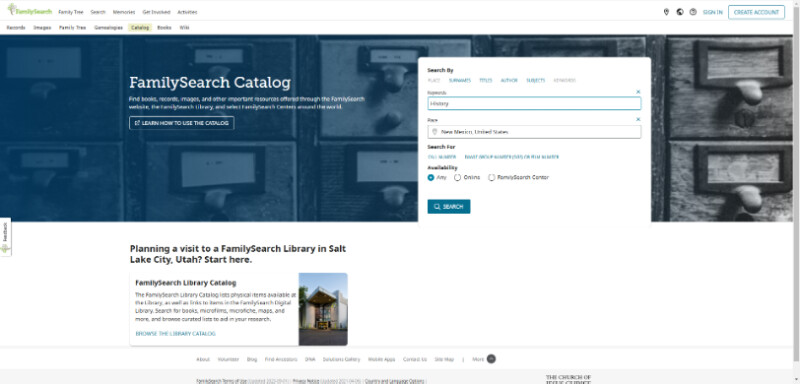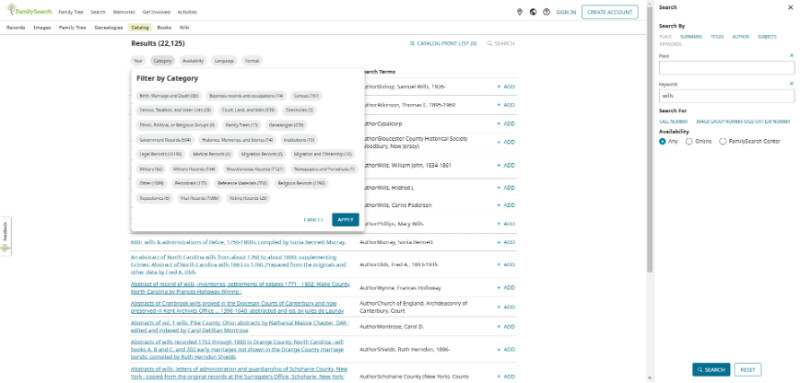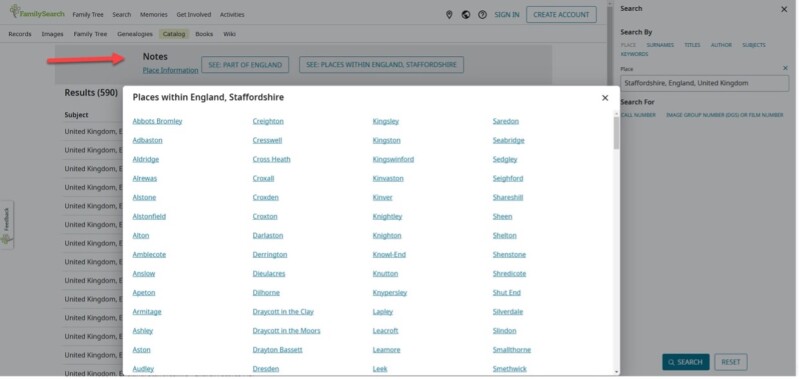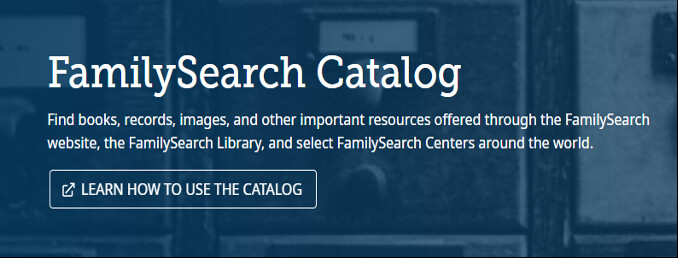For more than 2 decades, the FamilySearch Catalog has been the place to go to find books, records, images, and other important resources. It is an invaluable tool for researchers, librarians, and others, handling more than 5 million searches each week. Critical technology upgrades now enable us to keep the FamilySearch Catalog available and to continue to add new genealogical resources.
What Is the FamilySearch Catalog?
The FamilySearch Catalog is a comprehensive resource that lists items in FamilySearch‘s physical and digital collections. The items described in the catalog might be searchable online or available for use in person at the FamilySearch Library or at a local FamilySearch center.
With the catalog, you can:
- See if FamilySearch has an item you need and find out how to access it.
- Get access to scanned books in the FamilySearch Digital Library and microfilms in our online collections of indexed historical records.
- Create print lists of records you want to print or save for future reference. Tip: Print lists are a great way to plan your visit to the FamilySearch Library in Salt Lake City, Utah, or one of our many FamilySearch centers worldwide.
Why Was It Updated?
“You may be wondering why FamilySearch made changes to the catalog. It was running great. However, using a car analogy, the car may still be operating, but under the hood there may be well-worn parts that could fail at any time—parts that are no longer being manufactured. Finding replacements could take days or weeks while the catalog would be offline. Should the engine fail catastrophically, it would take months to replace,” said Robert Raymond, deputy chief genealogical officer at FamilySearch.
“Just how old is technology from 1996? The PalmPilot was released in 1996. Motorola started selling the first flip phone that same year. The Nintendo 64, which still used game cartridges, was released in the United States. The web was just 5 years old, with only 258,000 websites—compared to just over 1 billion today. The number of payphones in the United States had just peaked,” he added.
While the catalog remained functional, no changes or new data could be added to the old catalog system after June 2022.
How Has the Catalog Changed?
Where possible, the new catalog works exactly like it did before. However, there are some notable changes.
- New Data: The backlog of new physical acquisitions since 2022 is now included in the new catalog, and new items will be added as they are acquired. Physical items will also show up in the FamilySearch Library catalog.
- Initial Search Screen: The search screen looks different, but it works just like the old one. Select a specific search type or types, fill in the fields, and click Search. You can search by place, surname, title, author, subject, and keyword as well as by call number or film number. You can also combine searches, such as place and keyword, to narrow your search.

- Search Results and Filtering: Like when you search historical records on FamilySearch.org, you can narrow or expand your search criteria. The filters for keyword, surname, and title searches appear as ovals above the search results.

- Place Enhancements: In November 2023, the FamilySearch Catalog switched from using a catalog-specific list of places to using the same list of standard places as the rest of the FamilySearch website. The catalog-specific list of places couldn’t be maintained as it was. Our standardized places list is constantly growing to cover new parts of the world in more detail. This means that places may have slightly different display names than in the past. At the top of the results page, under “Notes,” you’ll find place information that helps clarify the old versus new catalog place-names. A few places in the old catalog have not yet been added, but more will come.

Targeted Help
Information about how to use the catalog has been collected and integrated into the experience. Find it by clicking Learn How to Use the Catalog.

The significant news with this technology change is that FamilySearch is fully committed to providing genealogists with a stable, up-to-date FamilySearch Catalog for many years to come.
Related Articles
At FamilySearch, we care about connecting you with your family, and we provide fun discovery experiences and family history services for free. Why? Because we cherish families and believe that connecting generations can improve our lives now and forever. We are a nonprofit organization sponsored by The Church of Jesus Christ of Latter-day Saints. To learn more about our beliefs, click here.





